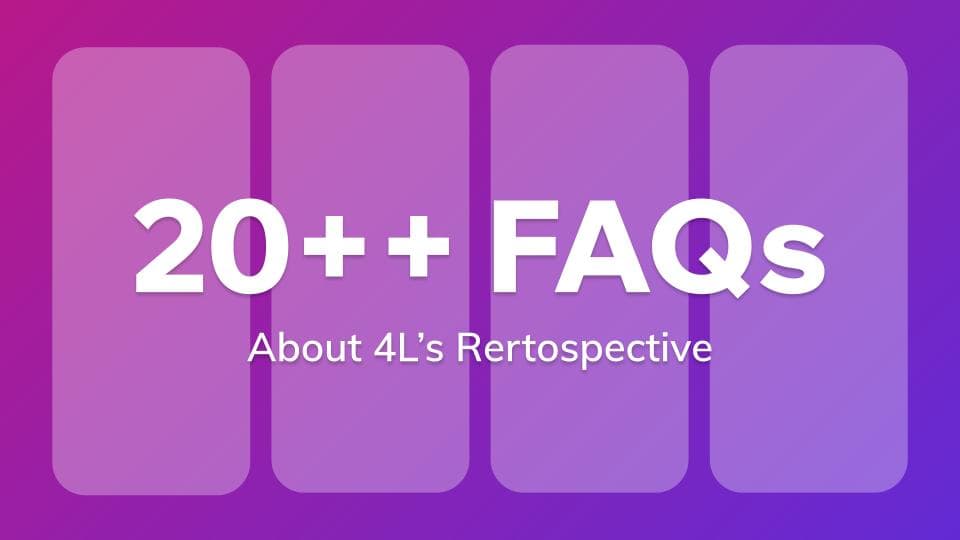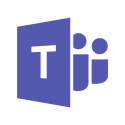
20+ FAQs All About the 4 L’s Retrospective

Whether you’re part of a remote or in-office team, you’re bound to hit roadblocks. But what if there were a simple, structured retrospective that could turn those hurdles into breakthroughs?
The 4 L’s Retrospective (Liked, Lacked, Learned, Longed For) has been the go-to framework for teams seeking actionable insights without overcomplication. Unlike traditional retros, the 4 L’s focus teams on four laser-focused quadrants, fostering psychological safety, clarity, and momentum, whether your team shares an office or spans time zones.
From streamlining remote collaboration to onboarding teams seamlessly with real-world examples, the 4 L’s adapts to any workflow.
Why it works? It achieves a balance of simplicity and depth by categorizing feedback into intuitive buckets, cutting through noise, and focusing on what actually matters.
Now that you know what it does, you might wonder: “Ok, cool, but how do I implement this? Or “What challenges should I expect?”
In this blog, we address the most common questions teams ask about implementing the 4 L’s, from tailoring it for remote settings to turning insights into action.
4 L’s Retrospective FAQs Answered
1. Covering The Basics
Q1: What is the 4 L’s retrospective? A: The 4 L’s retrospective is a simple, structured feedback framework where teams reflect on four categories: Liked, Lacked, Learned, and Longed For. It helps teams identify their strengths, gaps, areas for growth, and aspirations in a focused way.
Q2: How is it different from Start-Stop-Continue or other retrospectives?
A: Unlike the Start-Stop-Continue template, which focuses on actions, the 4 L’s encourages deeper reflection on emotions (Liked/Lacked) and growth (Learned/Longed For). It’s more holistic and less prescriptive.
Q3: When should a team use the 4 L’s retrospective?
A: Use it after sprints, projects, or milestones to uncover actionable insights. It’s especially useful when teams feel stuck or need to re-energize.
Q4: Is it only for Agile or Scrum teams?
A: No. Even though it’s mostly popular in Agile, it works for any team (such as marketing, HR, etc.) that needs structured feedback.
2. How to Implement the 4 L’s Retrospective
Q5: What are the four categories?
A:
Liked: What worked well.
Lacked: What fell short.
Learned: What’s something new we learned during the project cycle.
Longed For: What we hope and want to work towards in the future.
Q6: How much time should we allocate?
A: 45–60 minutes. Remote teams may need extra time for tool setup.
Q7: Can we run a 4 L’s Retrospective both in person and remotely?
A: Absolutely! Remote teams can use digital tools like Miro or Mural for sticky notes.
Q8: What tools work best?
A: Physical whiteboards for in-person use, or digital tools (Miro, Trello) for remote teams.
Q9: How do you facilitate effectively?
A:
Set clear goals.
Encourage equal participation.
Group similar sticky notes.
End with actionable next steps.
3. How to Encourage Conversations
Q10: What are good prompts for each L?
A:
Liked: “What made you proud this sprint?”
Lacked: “What obstacles slowed us down?”
Learned: “What surprised you?”
Longed For: “What would make our work easier in the next sprint?”.
Q11: How do you avoid vague answers?
A: Ask for specifics: “Instead of ‘communication was bad,’ try ‘We lacked a clear Slack channel for urgent requests’”.
Q12: Should we allow “negative” feedback in “Lacked”?
A: Yes, but frame it constructively. Remember: Focus on processes, not people.
Q13: How do you encourage quiet members?
A: Use anonymous submissions or round-robin sharing to reduce pressure and encourage participation.
4. About Action Items
Q14: How do you prioritize action items?
A: Vote on top issues, then assign owners and deadlines.
Q15: What if there are conflicting opinions?
A: Discuss openly, then test solutions for 1–2 sprints.
Q16: How to ensure follow-up?
A: Track items in your project tool (e.g., Jira, Asana) and review progress at the next retrospective.
Q17: Can it lead to real improvements?
A: Yes! Teams report better morale, more transparent processes, and faster iteration.
5. Pitfalls to Avoid
Q18: Common mistakes we should avoid?
A:
Rushing through categories.
Letting “Lacked” dominate.
Skipping action items.
Q19: How can we prevent complaint sessions?
A: Balance “Lacked” with “Liked” and focus on solutions.
Q20: What if the team struggles to express future aspirations for the “Longed For” category?
A: If your team struggles with "Longed For," reframe the question to spark creativity: "If we had no budget or time constraints, what would make our work 10x easier or more enjoyable?"
Practical tip: Start with examples like better tools, training, or work-life balance policies to break the ice.
Q21: How can we handle defensive reactions?
A: Remind the team: “Feedback is about systems, not individuals”. Pointing out the problem, rather than the people, will bring the team together.
6. How to Maximize Efficiency
Q22: Can it be combined with other techniques for maximum efficiency?
A: Yes! Try adding other techniques, such as dot voting to prioritize action items or Mad, Sad, Glad to warm up the team emotionally. For remote teams, pairing it with async prep work (e.g., pre-writing sticky notes in Miro) saves time and boosts engagement.
Pro tip: Start with a quick "Rose/Thorn" exercise to examine what went well and what challenged the team before diving into the 4 L’s for deeper reflection.
Q23: Are there variations of the 4 L’s retrospective for remote teams?
A: Use breakout rooms for small-group discussions or async tools like Loom for prep.
Q24: How can the 4 L’s be adapted for non-tech teams (e.g., marketing, HR)?
A: Replace Agile terms like "sprint" with your team’s workflow (e.g., "Q4 planning cycle" for marketing or "recruitment phase" for HR). Then, tailor the prompts to your priorities:
HR Example:
Longed For: "What tools or policies would make onboarding smoother?"
Marketing Example:
Learned: "Which campaign metric taught us the most?"
Why it works? This keeps the structure intact while making it feel natural for non-technical contexts.
Takeaway
The 4 L’s Retrospective can be the game-changer for your team if you’re craving clarity, psychological safety, and real progress. By focusing on Liked, Lacked, Learned, and Longed For, you cut through the noise and turn reflections into action, whether your team is remote, hybrid, or in-office.
But why stop here? Imagine having tailored Agile frameworks, expert facilitation, and proven tools to unlock your team’s full potential. Team O’Clock specializes in making retrospectives (and every Agile practice) work for you, not the other way around.
Get started with Team O’Clock for free today and turn insights into impact, one sprint at a time.

Get started with Team O’Clock for free today and turn insights into impact, one sprint at a time.
More articles to check

Assist your team's growth with our partnership program:








